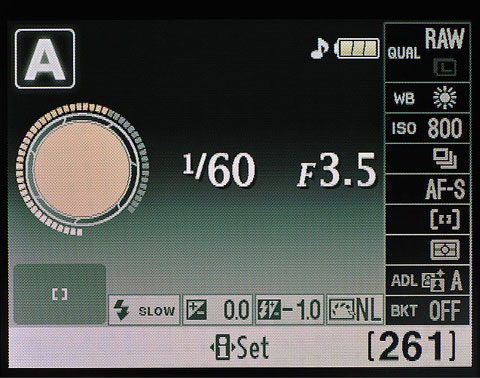How To Use Aperture On Camera


Beginner
Agreement Maximum Aperture

Learn how aperture affects the finish-consequence epitome.
What is discontinuity in photography?
Aperture refers to the opening of a lens's diaphragm through which calorie-free passes. It is calibrated in f/stops and is generally written as numbers such equally 1.4, two, ii.viii, iv, 5.6, 8, 11 and sixteen. Lower f/stops give more exposure because they represent the larger apertures, while the higher f/stops give less exposure considering they correspond smaller apertures. This may seem a lilliputian contradictory at first but will become clearer equally you take pictures at varying f/stops. Be sure to check your manual first to learn how to gear up Aperture Priority for your camera, then attempt experimenting to get comfortable with changing the aperture and recognizing the effects unlike apertures will take on the stop-event image.
How Aperture Affects Depth of Field
Depth of field is the zone of adequate sharpness in front of and behind the subject on which the lens is focused. But put: how sharp or blurry is the area behind your discipline.
The lower the f/stop—the larger the opening in the lens—the less depth of field—the blurrier the background.
The higher the f/cease—the smaller the opening in the lens—the greater the depth of field—the sharper the background.
How Aperture Affects Shutter Speed
Using a depression f/finish ways more light is inbound the lens and therefore the shutter doesn't need to stay open up equally long to make a correct exposure which translates into a faster shutter speed. Again, the opposite is true: using a high f/stop means that less light is entering the lens and therefore the shutter will need to stay open a little longer which translates into a slower shutter speed.
Where to Find Aperture on a Nikon Lens
All lenses have a maximum aperture, and all NIKKOR lenses listing the widest possible discontinuity on the lens barrel. Some zoom lenses will detail something similar f/3.5-5.half-dozen on the lens barrel or 1:3.v-v.6 (below right). These numbers, the three.v and the v.6, are referring to the maximum discontinuity or widest opening the lens can achieve for each end of the zoom range. Some college end lenses can maintain the largest aperture throughout the entire zoom range, so only one number is detailed (below left).
How to Choose Discontinuity
Now that nosotros know how to control depth of field, what determines the choices nosotros make in selecting the aperture? We use focus and depth of field to straight attention to what is of import in the photograph, and we use lack of focus to minimize distractions that cannot be eliminated from the composition. While in that location are no rules, at that place are some guidelines for selecting Discontinuity priority.
Aperture for Portraits
For classic portraiture we separate our subject from the surroundings by using "selective focus." Choosing a large aperture (lower f/stop, like f2.8) creates very shallow depth of field with only the subject, or but a portion of the subject, in focus. This helps direct the viewer's attention to the subject.
Discontinuity for Mural Photography
When choosing lenses for mural photography, we usually want to run across as much detail every bit possible from foreground to groundwork; we desire to attain the maximum depth of field by choosing a small aperture (higher f/end, similar f/8 or f/xi).
Aperture for Intermediate Depth of Field
While we tin go the maximum or minimum depth of field by working at each terminate of the aperture range, sometimes we want a more than intermediate level of depth of field, limiting focus to a specific range of distances inside the overall photograph. One way to do this is to cull a mid-range f/cease, like f/5.half dozen, and shoot a test frame. In image playback, use the magnifying role of the LCD to zoom in and cheque the depth of field; brand adjustments if necessary and reshoot.
This Article Goes Dandy With These Products
Source: https://www.nikonusa.com/en/learn-and-explore/a/tips-and-techniques/understanding-maximum-aperture.html
Posted by: baileybutragreake1938.blogspot.com

0 Response to "How To Use Aperture On Camera"
Post a Comment